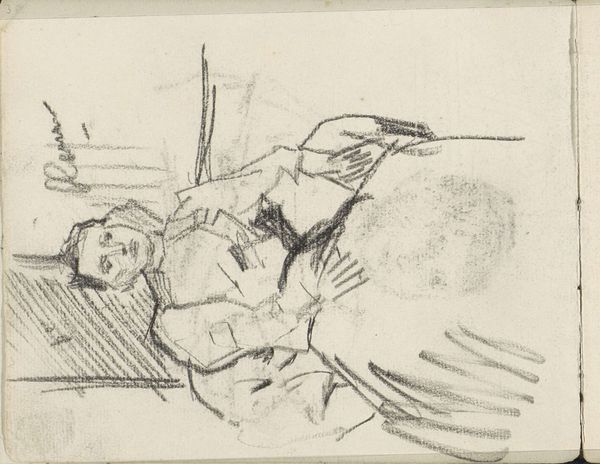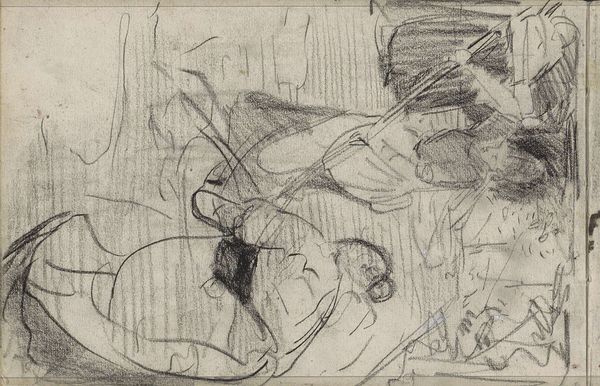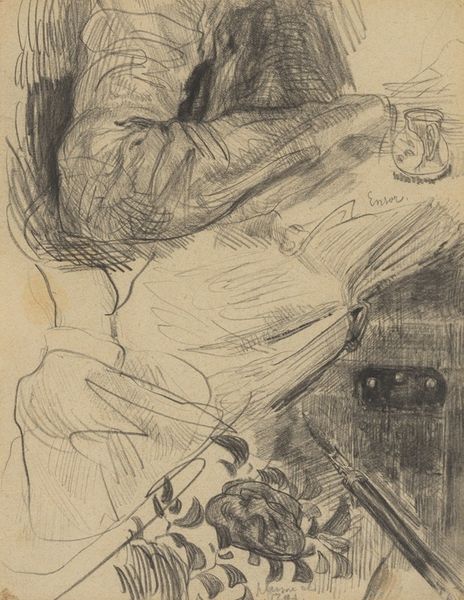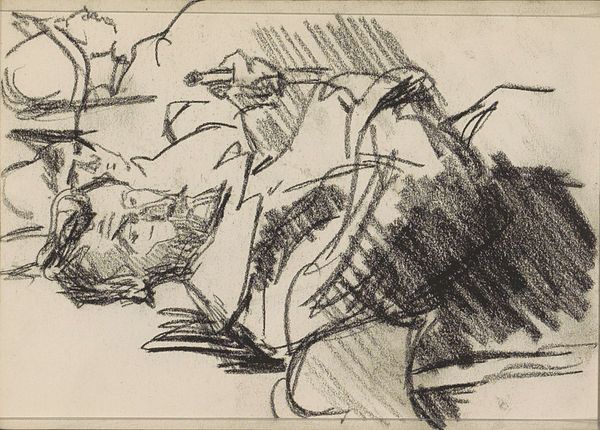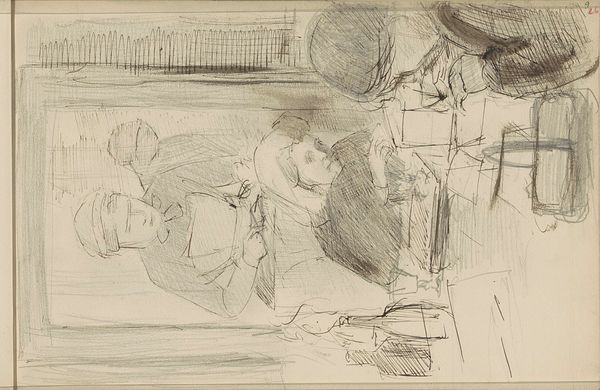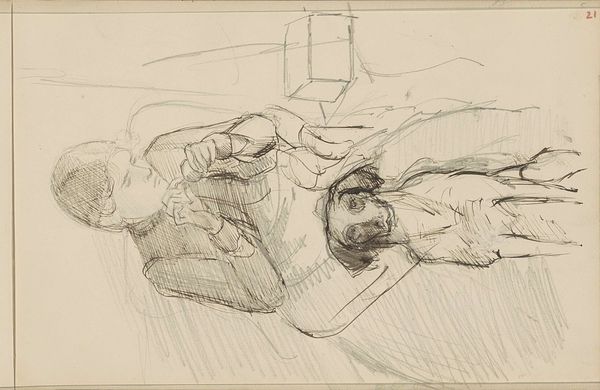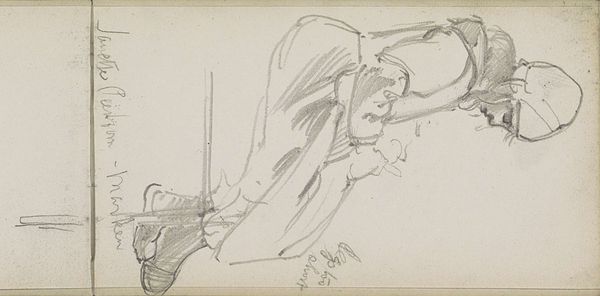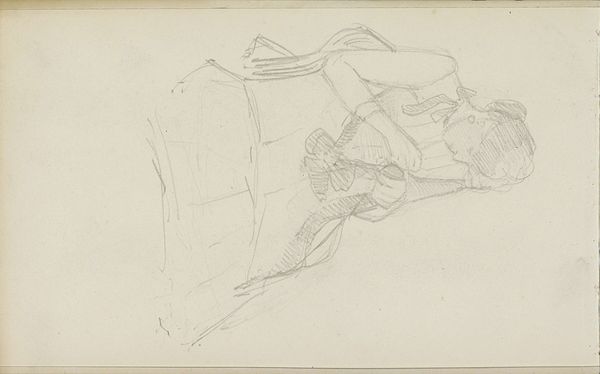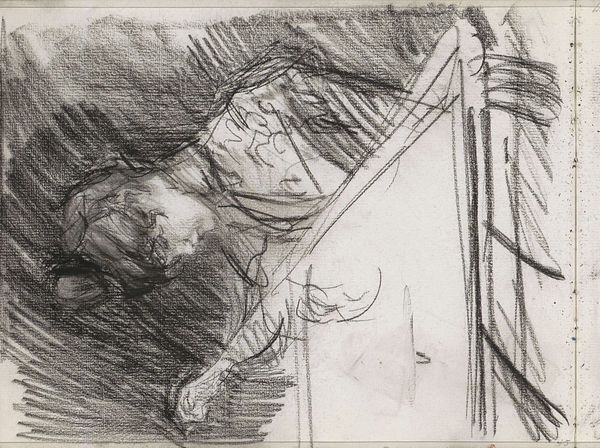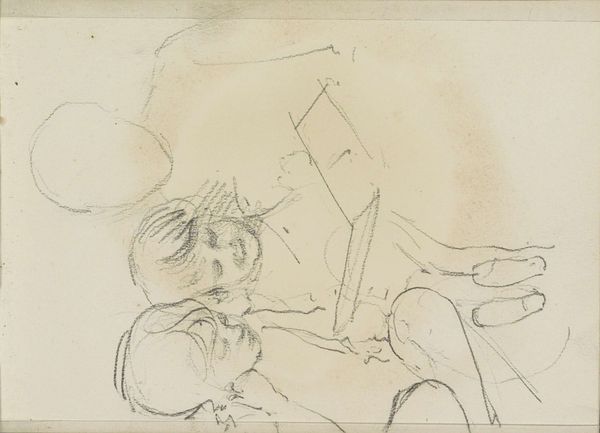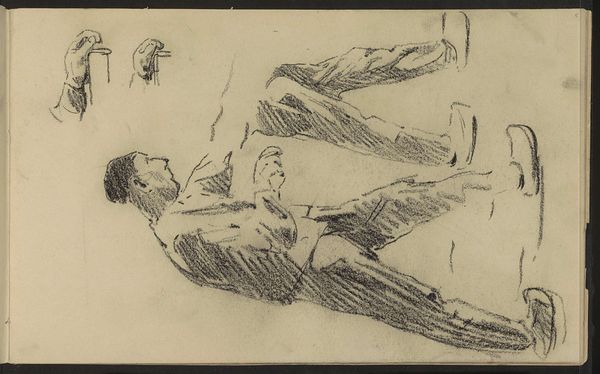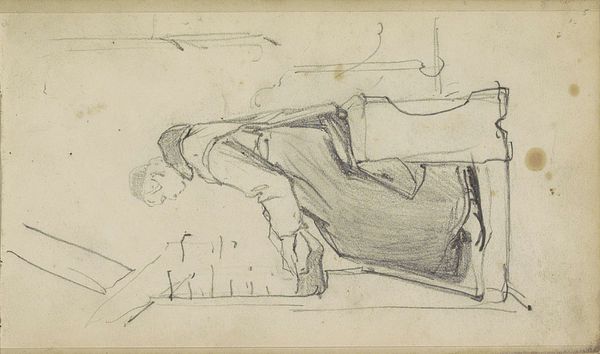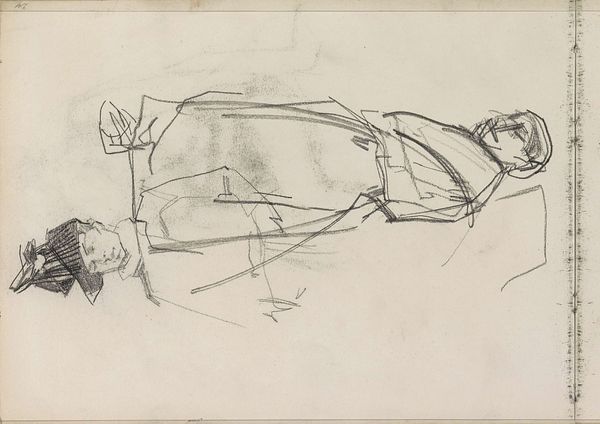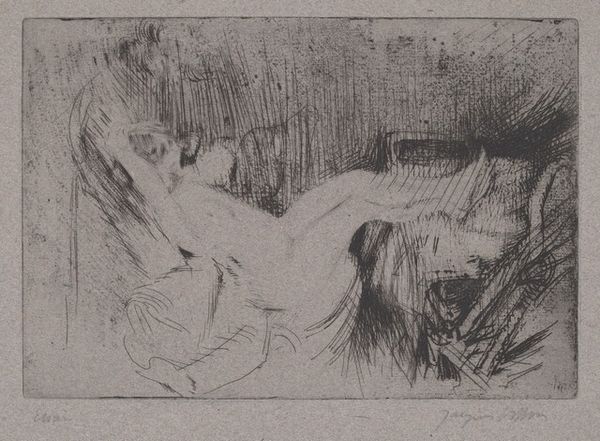
drawing, pencil
#
portrait
#
drawing
#
pencil sketch
#
figuration
#
intimism
#
pencil
#
nude
Copyright: Rijks Museum: Open Domain
Curator: Isaac Israels' "Zittend vrouwelijk naakt in een interieur," made sometime between 1915 and 1925, captures a seated nude woman in a pencil drawing. It's currently held at the Rijksmuseum. What's your initial take? Editor: It feels incredibly raw, almost like a stolen moment. The lines are so sketchy and immediate, like a quick study. It gives an intimate look at a model caught between poses. Curator: Right, it’s all about the visible process. The pencil strokes are clear, highlighting the labor involved in representing the female form. It's not about idealized beauty, but the act of observation and transcription of her. What do you think about its context? Editor: I immediately consider the era it was created. During that time, depicting the nude female form was frequently subjected to the male gaze and societal expectations. The model is reclining, seemingly aware of her gaze, creating a very modern contrast in how woman's body is viewed and displayed, Curator: I agree. Also the choice of a pencil drawing is quite clever because unlike painting or sculpting, drawings could also exist within education or journalism. Did the artist consider the boundaries of material? It raises the question of what defines “high art” versus a mere "study" Editor: It makes me think of the societal standards back then concerning who could create or be the art—was the model being adequately compensated and empowered, or exploited. Can it reflect some element of social power or freedom. It challenges you to interpret the relations surrounding the nude figure during the era and its complex representations. Curator: Absolutely. Seeing it as an immediate medium offers the most access between artist and image. Rather than a carefully rendered image or marble nude, here you’re seeing that immediacy of capturing the essence of form, even if unfinished. I am thinking that its imperfections enhance the material exploration. Editor: Right. The apparent casualness also raises complex issues regarding gender dynamics within the creation of art, and of intimacy and consent between an artist and his model, that's what really struck me in considering social context.. Curator: These nuances in the social context definitely help enhance understanding about not only of Israels, but art production and our perceptions concerning beauty. Editor: Right, seeing both artistic production as labour but also it reflecting wider questions on intimacy allows audiences of this audio guide an insightful opportunity to reinterpret drawing history..
Comments
No comments
Be the first to comment and join the conversation on the ultimate creative platform.
